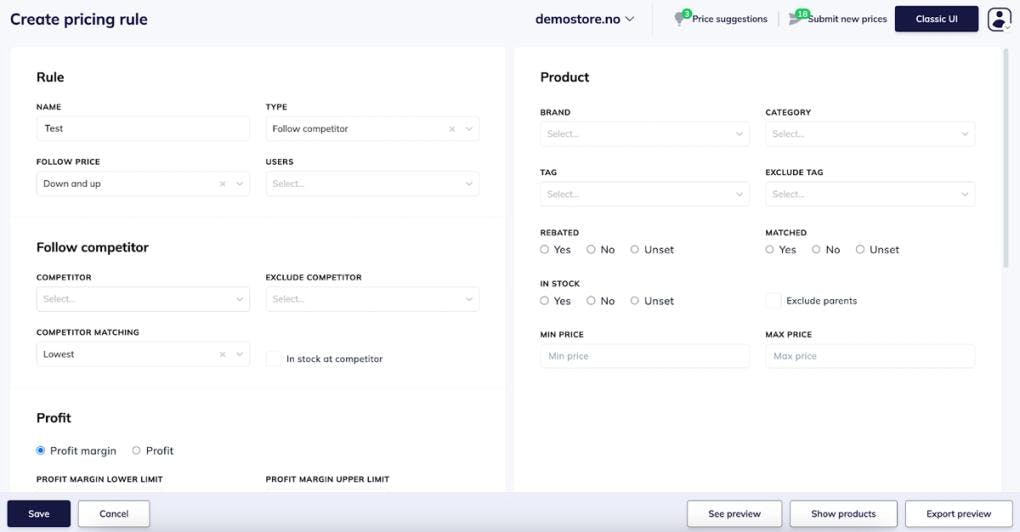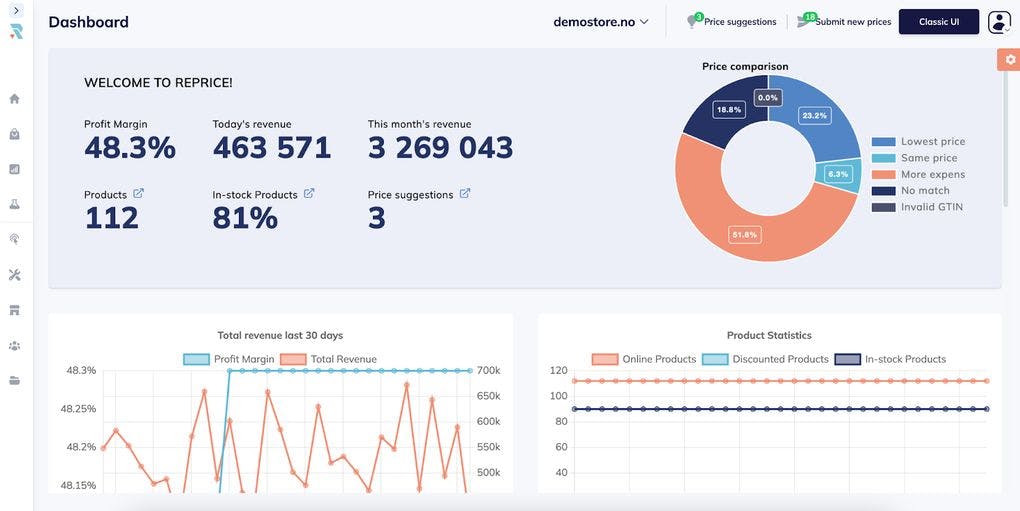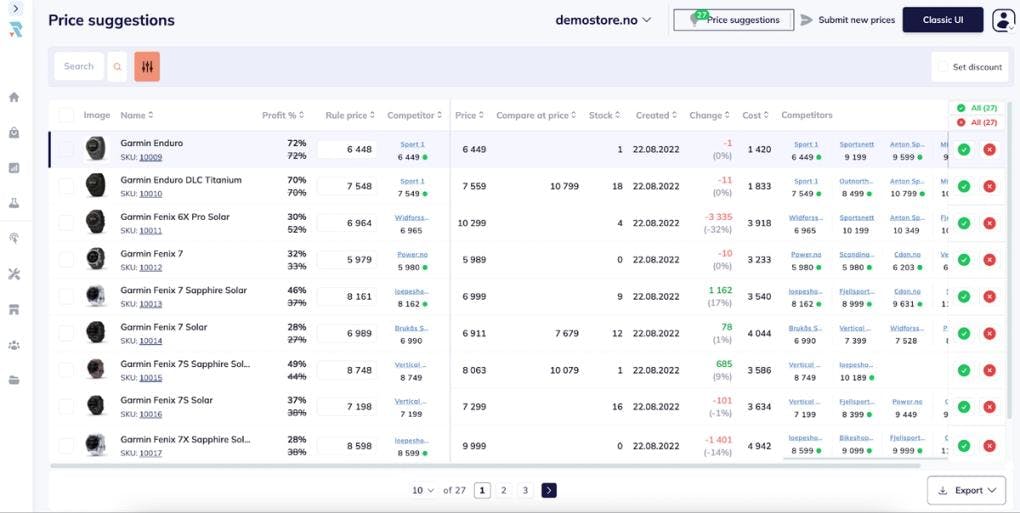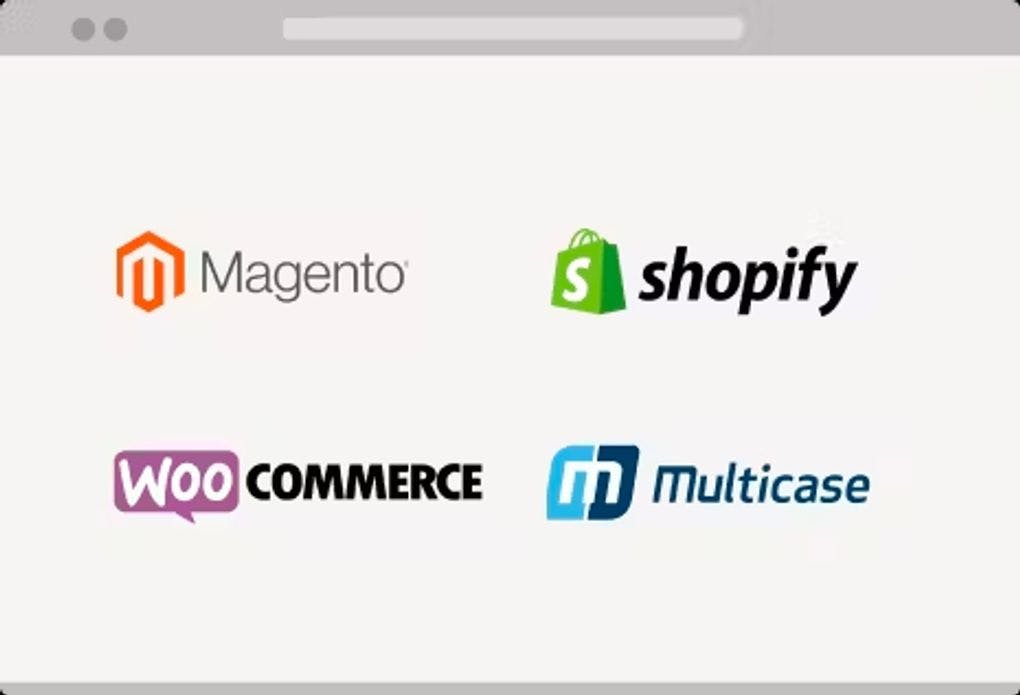How to Refine Your Pricing Strategies for E-commerce Success Through Customer Segmentation
January 10, 2024 | 10 minutes read
Imagine you're online shopping and stumble upon a site where the prices feel just right. You're not bombarded with endless discounts or over-the-top deals; instead, you find prices that seem tailor-made for you.
This is no coincidence, but a masterful play of customer segmentation in the digital marketplace.
In today’s world of e-commerce, understanding the art of pricing isn't just about numbers.
It's about knowing your customers as well as you know your products.
In this blog post, we'll dive into the world of customer segmentation and how it can refine your pricing strategy, turning your e-commerce business into a market stall that never misses.
Table of contents:
- What is customer segmentation?
- Why is customer segmentation important?
- 5 ways to segment your customers
- How to refine your pricing strategies through customer segmentation
- Conclusion
What is customer segmentation?
Customer segmentation involves categorizing online shoppers into distinct groups based on shared characteristics, behaviors, or preferences. It’s like organizing a large music festival with different stages, each playing a specific genre of music to cater to varied tastes.
Imagine you run a store or a company. You have many different customers, but not all of them want or need the same things. Some might be into sports, others into fashion, and some might be looking for budget-friendly options.
By using customer segmentation, you divide your customers into smaller groups based on their likes, age, income, location, or lifestyle. Once you know this, you can create special advertisements, offers, or products that are just right for each group.
This enables businesses to tailor their marketing and pricing strategies to engage and convert customers more effectively, as you understand and meet your customers' unique needs.

Why is customer segmentation important?
In the intricate landscape of Nordic e-commerce, understanding and catering to specific market segments is not just beneficial, it's essential.
Here's how customer segmentation plays a pivotal role:
- Diversity in market preferences: Although with a lot of commonalities, the Nordic region is a tapestry of distinct countries with each their own identity.
Customer segmentation is key to understanding these differences, crucial for setting prices that attract each unique customer group.
- Increased relevance and customization: Through segmentation, e-commerce businesses can offer more tailored products and services. For instance, a company might provide varied price levels or product bundles based on customers' purchasing power, needs, and preferences.
- Competitive advantage: Customer segmentation allows businesses to differentiate their prices from competitors. This is essential for attracting and retaining customers.
- Efficient resource allocation: Customer segmentation leads to a deeper understanding of which customer groups generate the most revenue.
This informs where businesses should focus their marketing and sales resources.
- Price elasticity: Understanding the price sensitivity of different segments helps businesses set prices that maximize profit without deterring customers. For example, premium products can be priced higher for segments with greater purchasing power.
- Local adaptation: E-commerce in the Nordics often requires local adaptation due to differences in language and currency, as well as varying consumer laws and tax regulations. Segmentation helps businesses tailor their prices and sales strategies to each specific market.
- Customer loyalty and relationship building: By recognizing and catering to the unique needs of different customer segments, e-commerce businesses can build stronger customer relationships and increase loyalty.
5 easy ways to segment your customers
Here are five of the most important or popular customer segmentation methods for e-commerce companies:
- Demographic segmentation: This approach categorizes customers by age, gender, income, education, and occupation. It's really practical for businesses, as it helps fine-tune marketing and products to suit diverse customer groups. This method makes their marketing efforts more relatable and effective.
- Geographic segmentation: Customers are sorted based on their location, like country, region, or city. It's crucial for e-commerce because people's shopping preferences and choices can vary a lot depending on where they live, affecting everything from product selection to shipping strategies.
- Behavioral segmentation: This focuses on customers' buying patterns, brand interactions, and product usage. It's a key player for online stores, enabling them to tailor the shopping experience, recommend the right products, and develop loyalty programs that resonate with how people shop.
- Psychographic segmentation: Digging into customers' lifestyles, interests, values, and attitudes, this method uncovers the deeper reasons behind purchases. It's crucial for e-commerce, guiding the creation of targeted ads, engaging content, and products that align with specific group interests.
- Value-based segmentation: This strategy looks at customers' long-term value, categorizing them as high, medium, or low spenders. It's essential for e-commerce, guiding where to invest marketing efforts and how to customize service levels, focusing especially on retaining high-value customers and spotting potential high-spenders in other segments.

How to refine your pricing strategies through customer segmentation
E-commerce companies can significantly enhance their pricing strategies through customer segmentation, and Reprice, an intuitive price optimization software, is a great tool in this process.
Here’s how it supports your customer segmentation efforts:
1. Tiered pricing models
By analyzing different customer segments, e-commerce businesses can create tiered pricing structures. Offering varied product or service levels at different prices caters to the budget and preferences of diverse groups.
Using Reprice, businesses can easily implement tiered pricing models. The manual price updating feature allows for precise adjustments of prices for selected products, brands, and categories. This enables companies to offer various product or service levels - like basic, premium, and deluxe - each specifically tailored to different customer segments.
2. Dynamic pricing
Dynamic pricing allows prices to change based on factors like demand and customer behavior.
With Reprice’s dynamic pricing capabilities, prices can be automatically adjusted in real-time based on factors like demand, availability, and purchasing behavior.
The tool features market trend analysis and lets you even create pricing rules based on criteria like “brand”, “category” or “tag” for any products defined in the pricing rule. This allows businesses to respond quickly to market changes, ensuring prices are always competitive and tailored to different customer segments.
In other words, a much more efficient pricing process overall.

3. Personalized discounts and offers
Segmentation allows for more targeted discounts and promotions.
Although Reprice does not directly create personalized discounts, its manual pricing adjustment feature and automated rule setting can be effectively used to design custom discount offers.
Companies can use this to provide targeted promotions to specific segments, enhancing the appeal and relevance of their offers.

4. Bundle pricing
Creating bundled offers for specific segments can increase convenience and appeal. Reprice's bulk update feature is particularly useful for bundle pricing strategies, and if you’re looking to streamline your pricing process overall.
Businesses can adjust prices for products that are commonly purchased together, offering them at a discounted rate.
This is particularly appealing to segments looking for convenience or bundled deals.
5. Geographical pricing
Geographical segmentation is vital for setting prices according to local economic conditions and market dynamics.
Utilizing Reprice’s centralized dashboard, businesses can gain a comprehensive view of the market dynamics, including how competitors are pricing similar products, and identify trends that could impact their sales and pricing strategies.
From there, they can set prices based on regional economic conditions, competition levels, and local market dynamics. This ensures that pricing strategies are tailored to the purchasing power and preferences of customers in different geographical areas.

6. Value-based pricing
This approach prices products based on their perceived value to different segments. Reprice helps in setting prices based on the perceived value of products or services to different segments.
By tracking market trends and analyzing competitor pricing, businesses can align their prices with what different segments value most, enhancing the perceived worth and appeal of their offerings.
7. Psychological pricing
Understanding how different segments react to pricing is key. Reprice’s manual pricing control allows businesses to experiment with psychological pricing strategies.
For instance, setting prices to end in .99 or using round numbers can be more appealing to certain customer segments, and Reprice makes it easy to implement these nuanced pricing tactics.
8. Seasonal or time-based pricing
Customer data can dictate optimal times for price adjustments. Reprice’s market trend suggestions are ideal for seasonal or time-based pricing strategies. Companies can use these insights to adjust prices during peak or off-peak seasons, aligning with market demand and segment preferences.

9. Cross-selling and up-selling strategies
Understanding segment preferences aids in tailoring cross-selling and up-selling tactics.
Reprice’s integration with core e-commerce platforms (Shopify, Magento and WooCommerce) enables effective synchronization of product data, which is essential for tailored cross-selling and up-selling strategies.
Understanding segment preferences through Reprice’s data analysis helps in making targeted recommendations and offers that resonate with specific customer groups.

Conclusion
Understanding and catering to the unique needs of different customer segments is essential.
Whether it's based on demographics, geographical location, buying behavior, lifestyle choices, or customer value, segmentation enables e-commerce businesses to refine their approach, making their marketing efforts more effective and relatable.
Reprice plays a big role in this tailored approach.
The tool helps businesses to implement sophisticated pricing strategies like tiered pricing, dynamic pricing, and personalized discounts, all tailored to different customer segments.
Features like manual and automatic price adjustments, market analysis, competitor benchmarking, and integration with e-commerce platforms, enable businesses to adapt prices based on real-time market data, customer behavior, and specific segment needs.
Ready to get started with Reprice?
Robin Frugaard Jørgensen
Chief Commercial Officer at Reprice
Robin Frugaard Jørgensen is Chief Commercial Officer at Reprice. Prior to joining Reprice in January 2023, Robin spent several years working with pricing strategies in B2B & the consumer electronics industry. Connect with Robin on LinkedIn here or book a demo to see how Reprice can solve your e-commerce pricing challenges.
